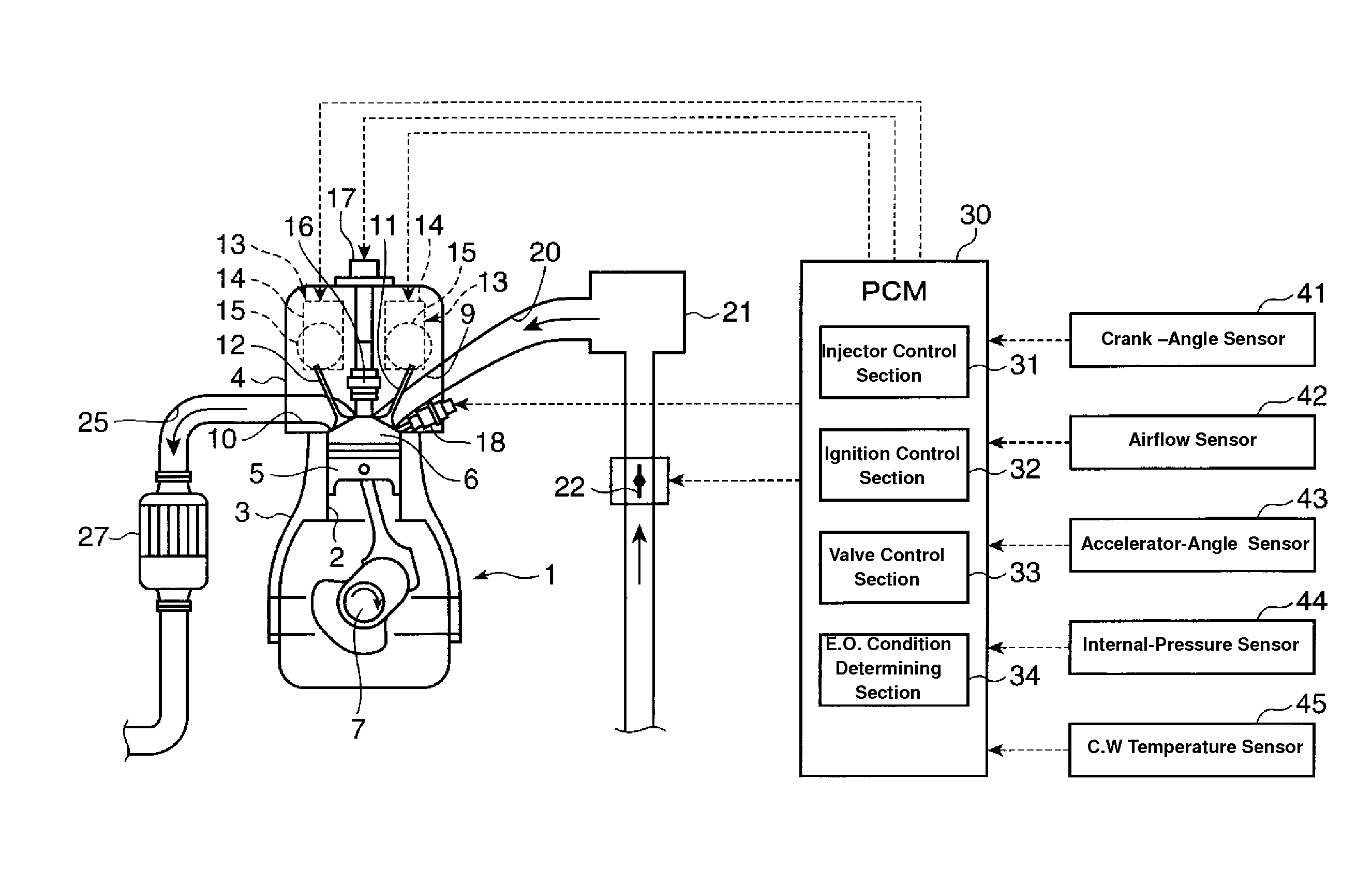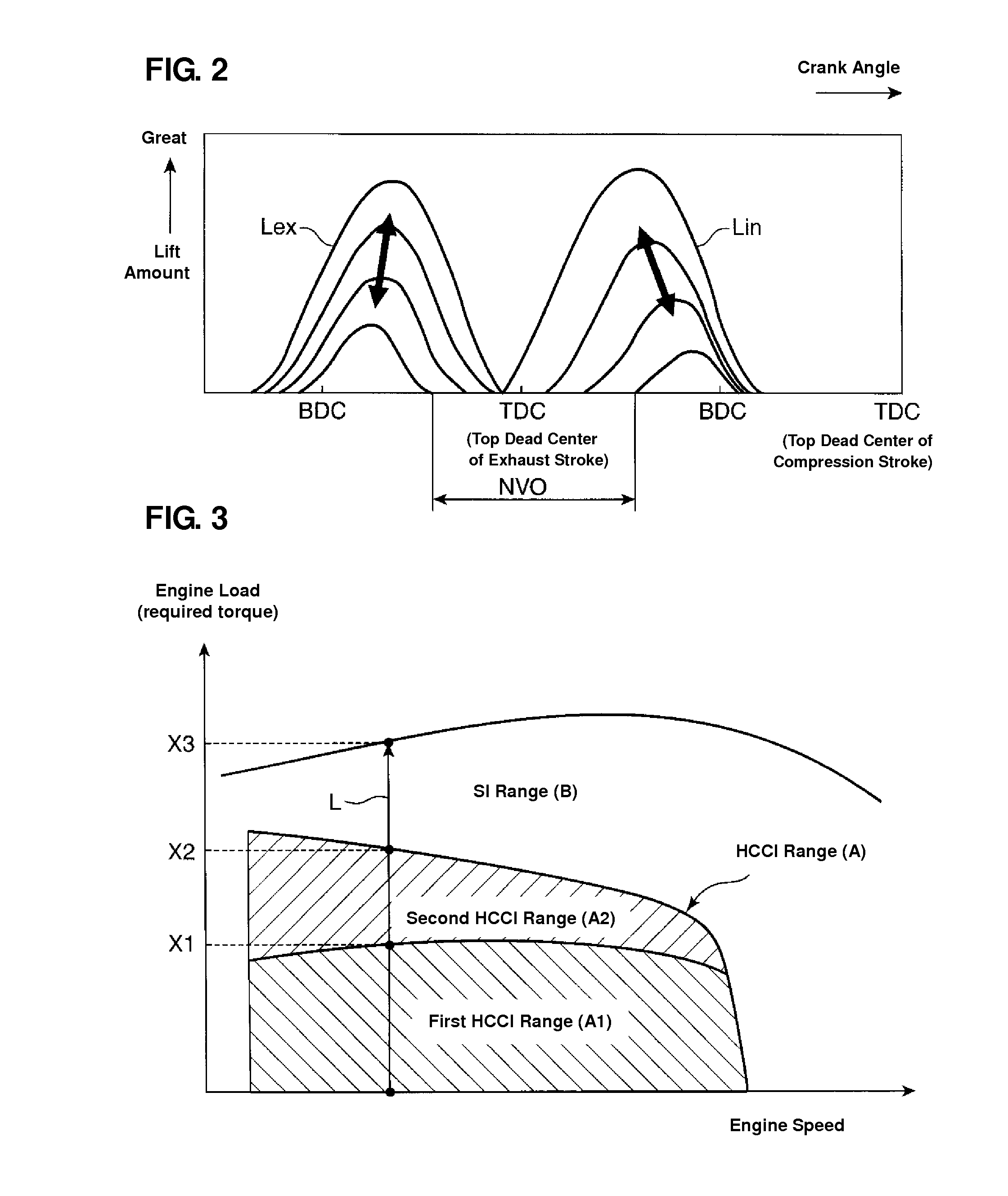Control method and system of engine
a control method and engine technology, applied in the direction of electrical control, process and machine control, instruments, etc., can solve the problems of nox emission, excessive temperature and pressure in the combustion chamber, and injected fuel may combust, so as to prevent any improper detonation or deterioration of nox emission
- Summary
- Abstract
- Description
- Claims
- Application Information
AI Technical Summary
Benefits of technology
Problems solved by technology
Method used
Image
Examples
Embodiment Construction
[0023]Hereinafter, a preferred embodiment of the present invention will be described referring to the accompanying drawings.
[0024]FIG. 1 is a schematic diagram showing a whole constitution of an engine to which a control method of the present invention is applied. The engine shown in this figure, which is a multi-cylinder gasoline engine, comprises an engine body 1 which includes a cylinder block 3 having plural cylinders 2 (only one of them illustrated in FIG. 1) which are arranged in a direction perpendicular to a paper surface, and a cylinder head 4 which is arranged on the cylinder block 3. A piston 5 is inserted into each of the cylinders 2 of the engine body 1, and a combustion chamber 6 having a specified volume is formed between a top face of the piston 5 and a bottom face of the cylinder head 4. The piston 5 is connected to a crank shaft 7 via a connecting rod so that the crank shaft 7 rotates around its axis according to a reciprocating movement of the piston 5.
[0025]An in...
PUM
 Login to View More
Login to View More Abstract
Description
Claims
Application Information
 Login to View More
Login to View More - R&D
- Intellectual Property
- Life Sciences
- Materials
- Tech Scout
- Unparalleled Data Quality
- Higher Quality Content
- 60% Fewer Hallucinations
Browse by: Latest US Patents, China's latest patents, Technical Efficacy Thesaurus, Application Domain, Technology Topic, Popular Technical Reports.
© 2025 PatSnap. All rights reserved.Legal|Privacy policy|Modern Slavery Act Transparency Statement|Sitemap|About US| Contact US: help@patsnap.com



